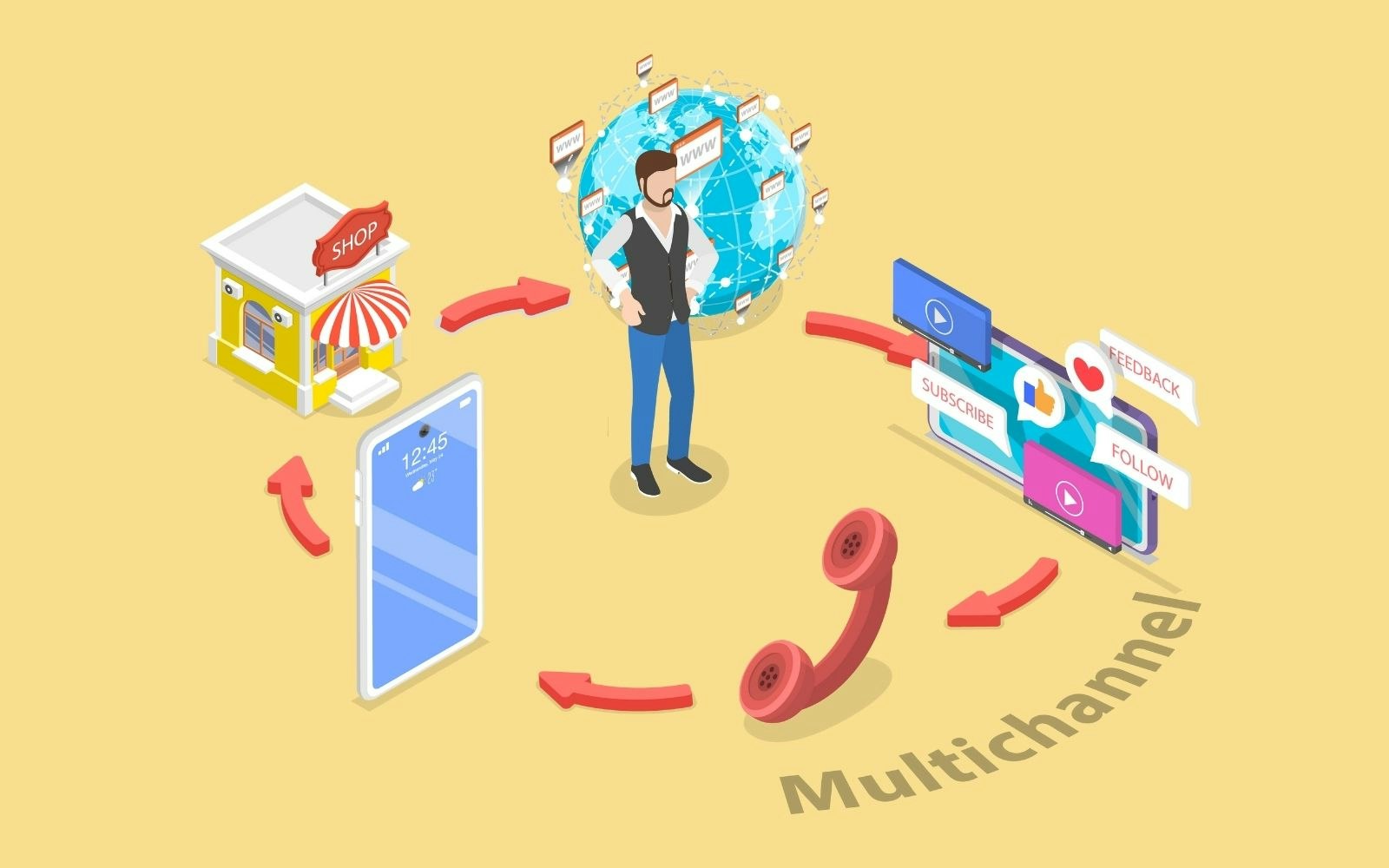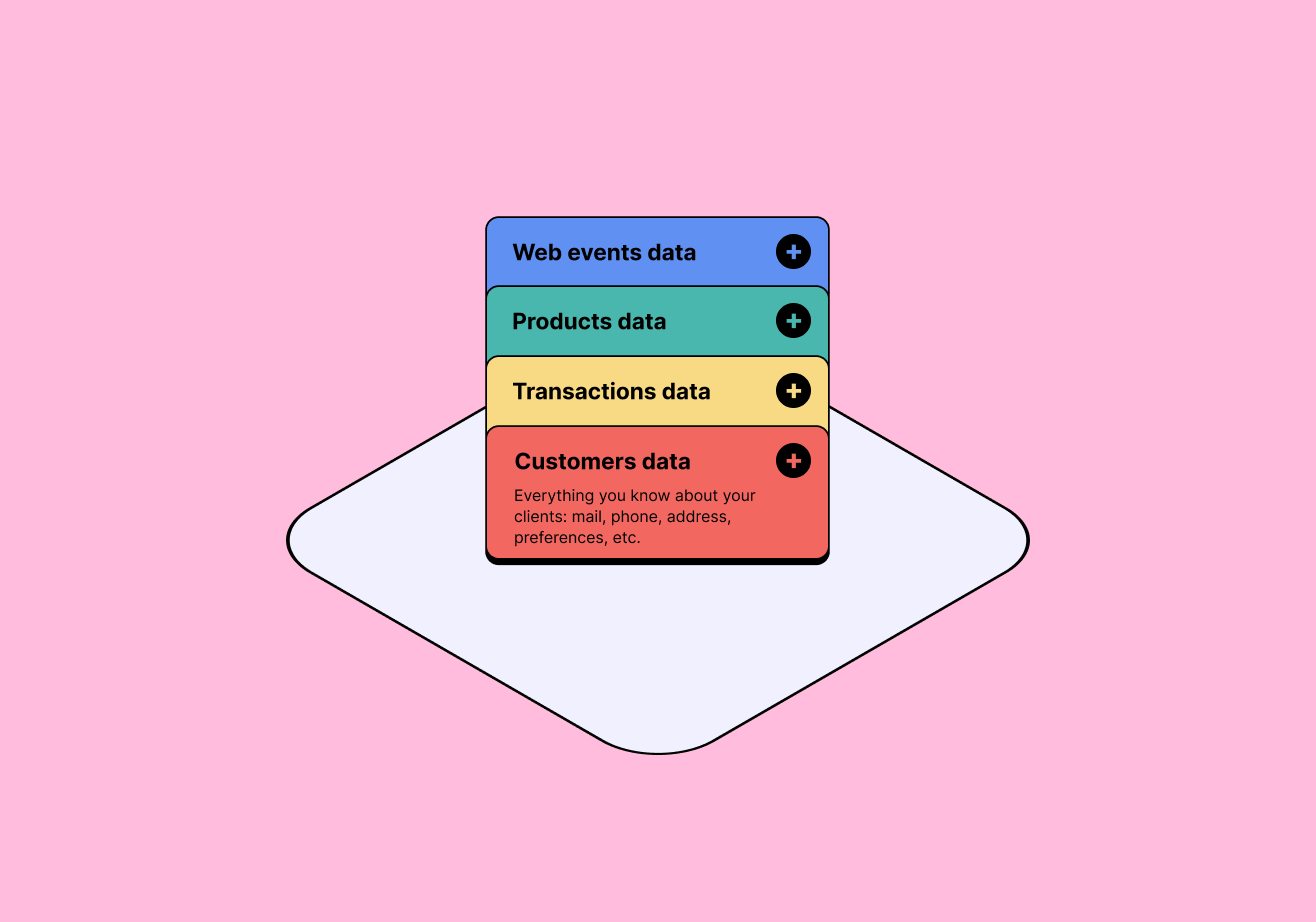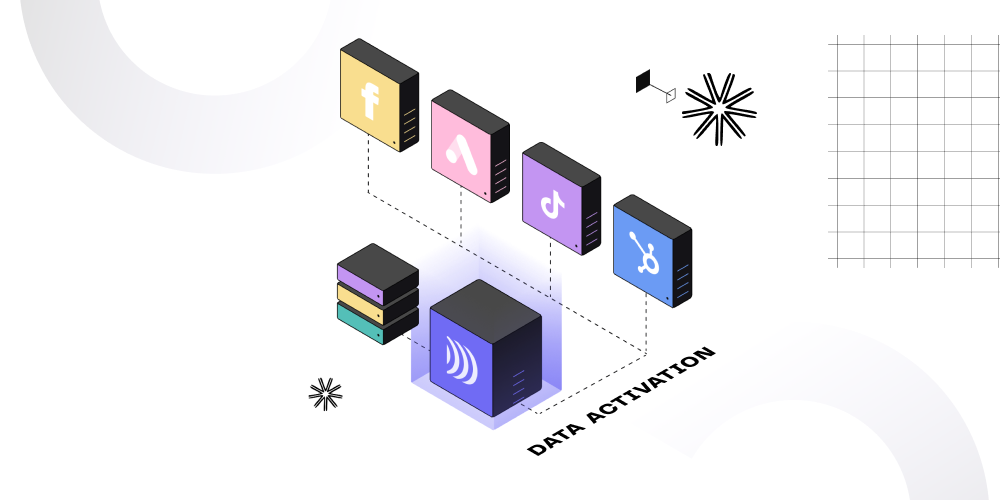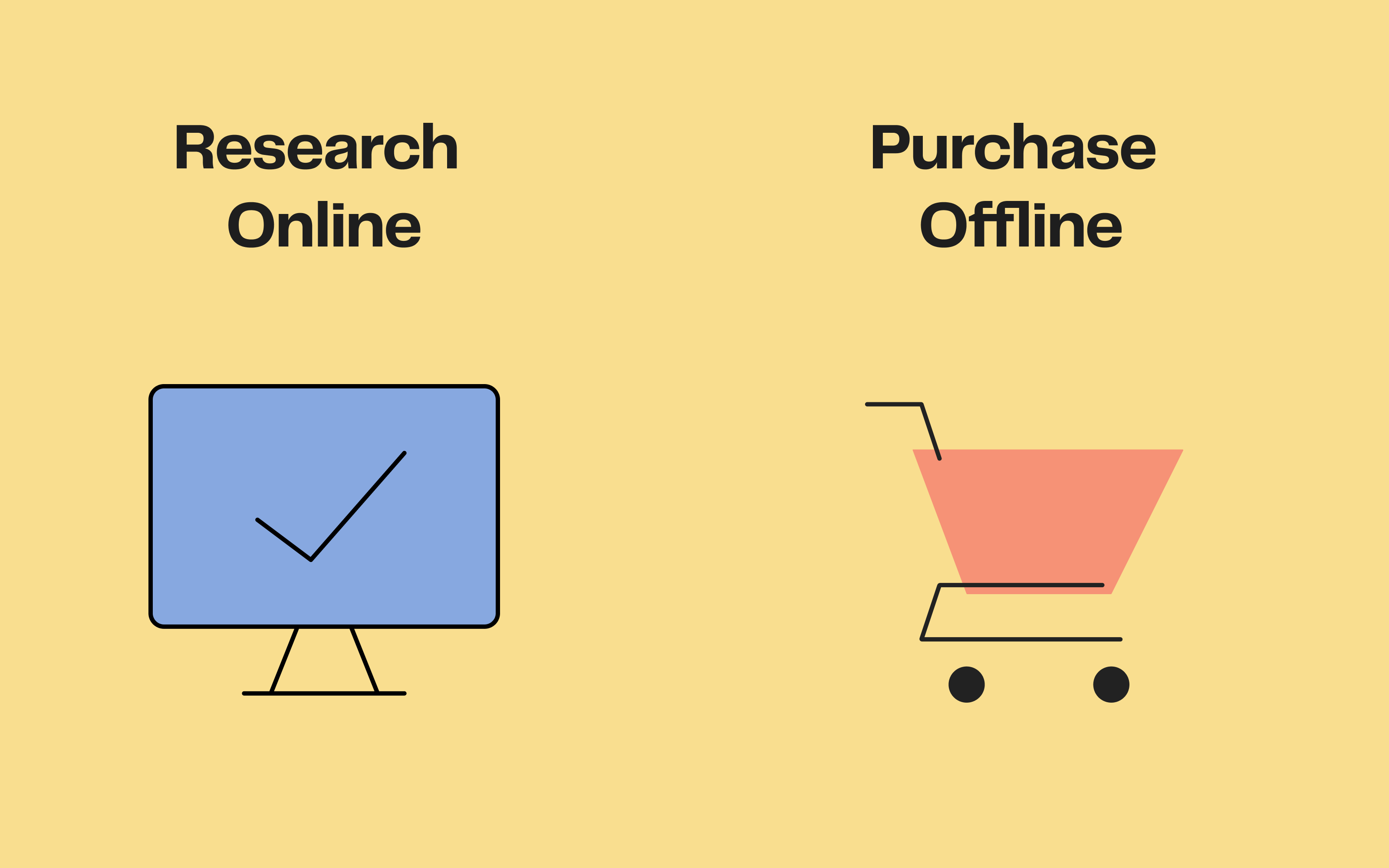
ROPO: definition, measure, best practices
5min • Last updated on Mar 5, 2025

Alexandra Augusti
Chief of Staff
ROPO, an acronym for Research Online, Purchase Offline, describes a purchasing process where the consumer gathers information online before finalizing their purchase in a physical store (offline). This trend affects a multitude of products and services, particularly those involving a long decision-making process, and thus prior consultations.
This phenomenon presents a significant challenge for digital marketing professionals, who are encouraged to rethink their strategies to attract and retain this category of hybrid consumers, with the most seamless omnichannel experience possible.
Why does ROPO remain an essential marketing trend for buyers?
ROPO highlights the behavior of consumers who research online before visiting a store to make their purchases. Many believed that e-commerce would have a significant impact on the physical sales of several brands. Of course, this has evolved over time, but most studies on the subject emphasize the persistent importance of physical stores in a customer's purchasing journey.
Why is ROPO still relevant today?
Online shopping certainly offers consumers a multitude of advantages, such as easy access, a wide range of products, the ability to compare prices, and home delivery. However, it is not without its drawbacks, such as the lack of direct contact, the risk of fraud, or the challenges related to assessing product quality.
This is why many shoppers prefer visiting a store to finalize their purchase after conducting online research. In-store, they can tangibly evaluate, try, or test products, benefit from salespeople's advice, and enjoy a rich customer experience.
ROPO remains a reality, especially for products with a long decision-making process (like automobiles, for example) or for which quality is an important aspect (like bedding, for example). However, even in fast fashion, it's not uncommon to observe this ROPO phenomenon, as the in-store experience is more convivial.
What are the different types of ROPO?
Various forms of ROPO manifest, influenced by the motivation and engagement of consumers. We can identify the following categories:
The “impulse buy” ROPO: the buyer is captivated by a product discovered online but wants to see it in person before purchasing it because they have doubts about the quality, appearance, etc.
The “fixed idea” ROPO: the buyer has a specific product in mind that they want to purchase but wants to compare the different options available online before making their final choice in-store.
The “reassurance” ROPO: the buyer doubts the reliability of an e-commerce site or the quality of a product and opts for a visit to the store to get guarantees.
The “emergency” ROPO: the buyer urgently needs a product and consults the internet to identify a nearby store where they can find it (hence the importance of being well-referenced for this type of product and having an up-to-date Google My Business page).
The “experience” ROPO: the buyer wants to enjoy a distinctive brand experience or take advantage of the services associated with the product by visiting a store. For example, you can always order capsules on Nespresso’s e-commerce site, but you won't be able to enjoy a free product tasting unless you visit a store.
What are the key benefits of the ROPO effect for retailers?
Beyond its undeniable advantages for consumers, the ROPO effect proves to be a major asset for sellers, provided they know how to fully exploit its potential. The interaction between the digital world and physical stores opens many doors for companies driven by an omnichannel strategy.
Let's explore the significant advantages of the ROPO effect for retailers:
The ROPO effect expands your audience. By establishing your presence both online and offline, you attract consumers with varied shopping preferences. This strategy amplifies your visibility and strengthens your brand awareness among a broader audience.
The ROPO effect enhances your customer relationships. By offering a smooth and omnichannel shopping experience, you establish a bond of loyalty and trust with your customers. This approach allows you to tailor your communication and offerings according to the specificities of each customer's buying journey, thus offering unprecedented personalization.
The ROPO effect addresses cart abandonment. Shipping costs and delivery times often pose obstacles to completing an online purchase. By encouraging customers to visit a store to complete their purchase, you minimize the cart abandonment rate and maximize your conversion rate. This is particularly one of the great keys to the success of click-and-collect!
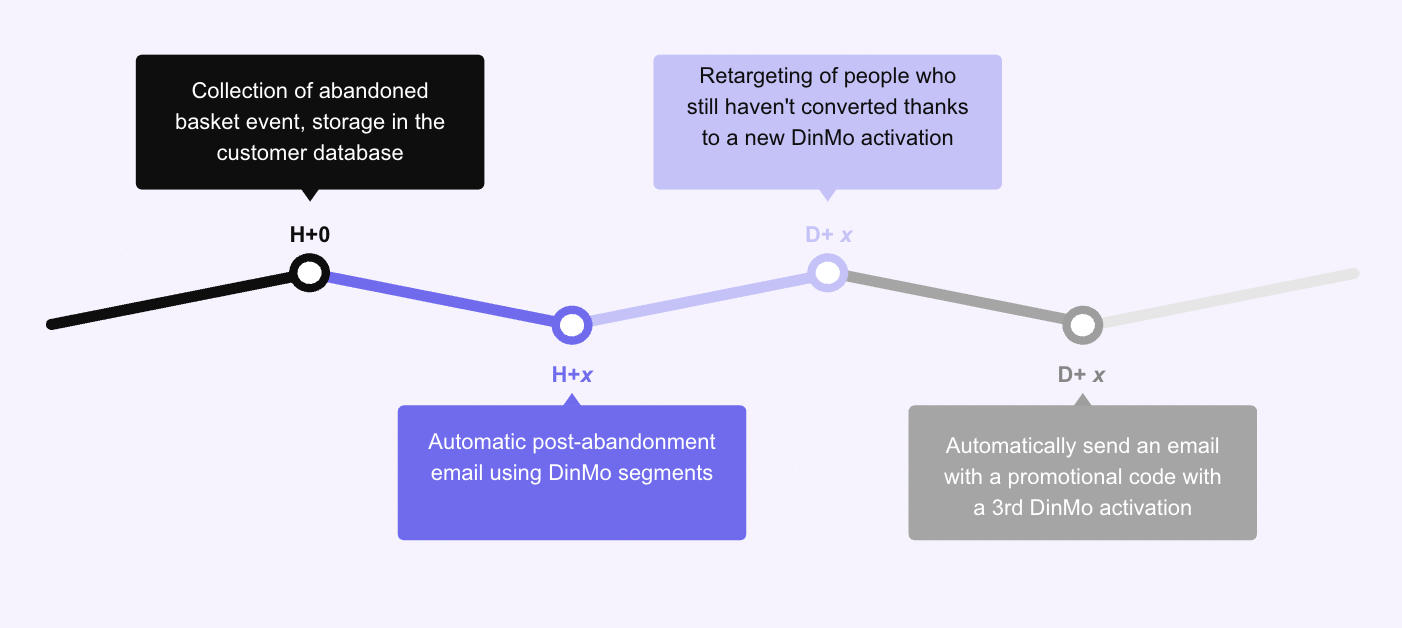
Illustration - Multicanal reactivation after cart abandonment
The ROPO effect boosts in-store conversions. Consumers who research online tend to have a more determined purchase intent when they enter a store. On-site, additional sales techniques, such as cross-selling or up-selling, can be used to increase the average basket size. Many of your customers will purchase more than they initially planned when they arrive in person!
How to measure the impact of digital marketing on in-store sales?
The potential of digital marketing to attract and retain consumers is undeniable. Tools and methods exist to evaluate the ROI of digital actions on offline performance.
👇 We offer you a detailed explanatory guide to understanding the influence of digital on physical sales.
1/ Identifying the motivations for moving from online to offline
At the outset, it is essential to determine what factors may encourage an online visitor to visit a store. These factors may be related to aspects such as the product, price, promotions, distribution, or customer relationship. For example:
A visitor views a product page on an e-commerce site and is potentially encouraged to visit a store if there is information on availability or the option to reserve in-store.
Sending a promotional email increases the chances of a store visit if the email includes a promo code or a discount voucher usable at the checkout.
Browsing a brand's website reinforces the incentive to buy in-store if services such as click-and-collect or free in-store delivery are available. If the person is led to come to the store, they are likely to check out the products displayed in your aisles as well!
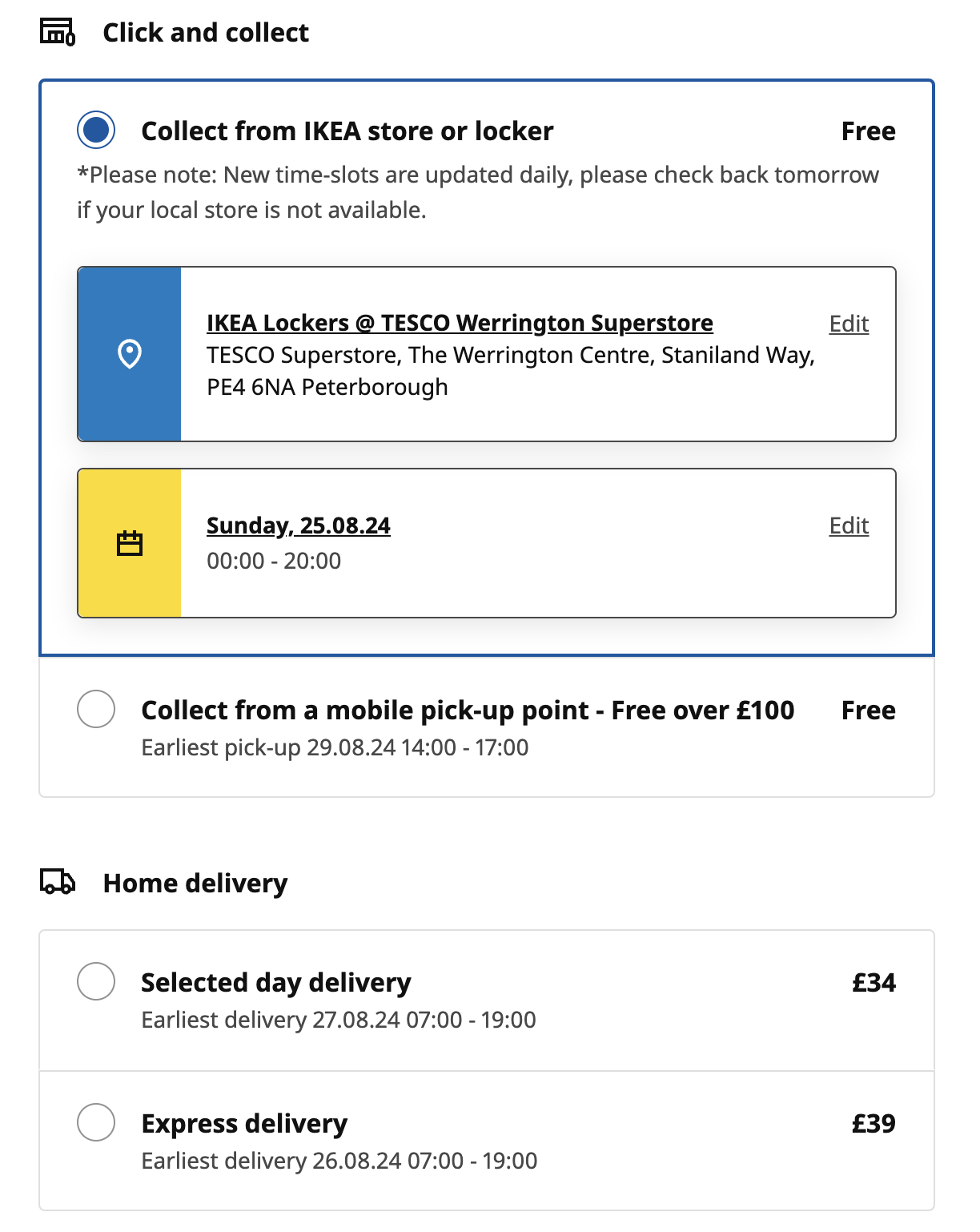
Example: Ikea shipping costs
Interaction with a brand on social media motivates a store visit if it announces a special event, contest, or specific in-store activity.
Contact with a retailer's customer service can convert into a store visit if the consumer receives a personalized invitation or an attractive loyalty offer.
2/ From hypothesis to measurement of ROPO impact
The next phase involves validating hypotheses through quantitative data and qualitative insights, allowing the assessment of digital influence on physical sales. Using key performance indicators (KPIs) from web analytics tools, surveys, or A/B tests is essential.
For example, one can analyze:
The click rate on buttons or links directing to stores, present on the site or in emails.
The conversion rate of promotions or coupons used in-store compared to the volume of emails distributed.
The level of use of click-and-collect services or free in-store delivery compared to the total number of online orders. Even better, the cross-referencing of in-store transaction data for a person who used click-and-collect that day.
The engagement rate during events, contests, or activities offered in-store in connection with social media activity.
The level of satisfaction and loyalty of customers who benefited from personalized offers or loyalty programs compared to the number of interactions with customer service.
It is important to note that these indicators are based on a probabilistic approach, which, although relevant, does not allow for absolute certainty about the direct link between online activities and in-store purchases without specific personal data (such as a phone number or email address). The collection and use of such data are, however, regulated by privacy and data protection standards, such as GDPR.
Maximizing online and offline conversions through ROPO dynamics
In an ultra-connected commercial world, the ROPO effect represents a boon for savvy retailers. It is about creating a seamless omnichannel customer experience, both coherent and personalized, that motivates consumers to transition from online research to in-store purchases.
To achieve this, the adoption of precise strategies and proven practices is essential. Here are some techniques to amplify conversions both online and offline by leveraging the ROPO effect:
Activating your data (both online and offline) in your marketing tools, so that you can have a full picture of their customer journey. Data Activation takes your business from merely understanding data to acting upon it. Without a 360° view and data in your tools, you can't optimize your multi-touch or omnichannel campaigns.
Perfecting the local SEO of your website. The challenge is to ensure that your site appears among the top results in local searches by incorporating geospecific keywords, optimizing your presence on Google My Business, and collecting customer reviews.
Making your website more accessible and informative. It is crucial to provide a smooth user experience with clear and appropriate content, as well as useful features such as geolocation and real-time stock verification.
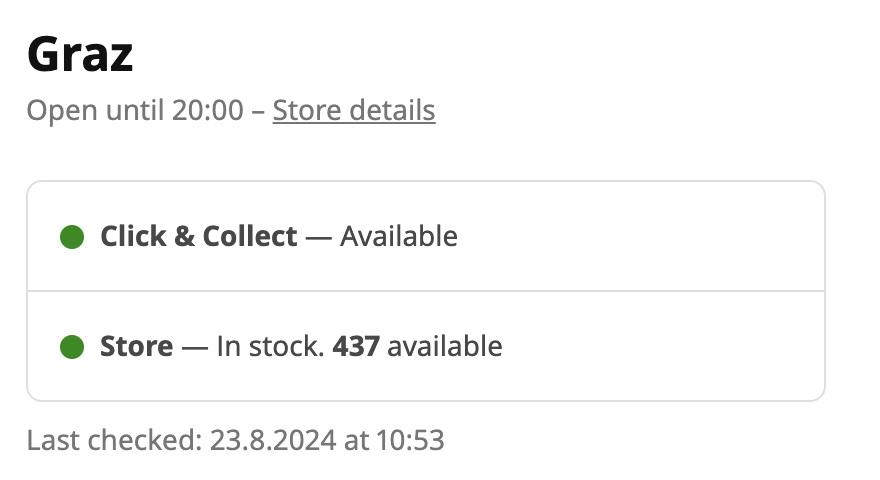
Example: Ikea information on stocks
Mobilizing the web-to-store strategy to boost conversions. This involves creating bridges between your online presence and physical stores, encouraging in-store visits to complete a purchase through exclusive in-store offers, such as discounts, vouchers, or gifts.
Strengthening customer relations through digital marketing. The goal is to engage with your prospects and customers through digital marketing to retain them and encourage in-store purchases by establishing personalized communications based on the profile, behavior, and purchase journey of each individual, through email, social media, or SMS.
By implementing these strategies, sellers can fully exploit the ROPO effect to boost their conversions both online and offline.
Conclusion
In the world of commerce, ROPO is a major strategy for brands and retailers seeking to adapt to consumers with hybrid behaviors. To captivate and retain this clientele, the challenge lies in creating a well-crafted and customized omnichannel experience that facilitates the transition from digital exploration to physical engagement in-store.
It is also essential to quantify the effectiveness of your digital marketing campaigns on in-store transactions using appropriate metrics. By adopting these practices, you will be able to optimize your conversion rates both online and offline, and accelerate the growth of your revenue.


















